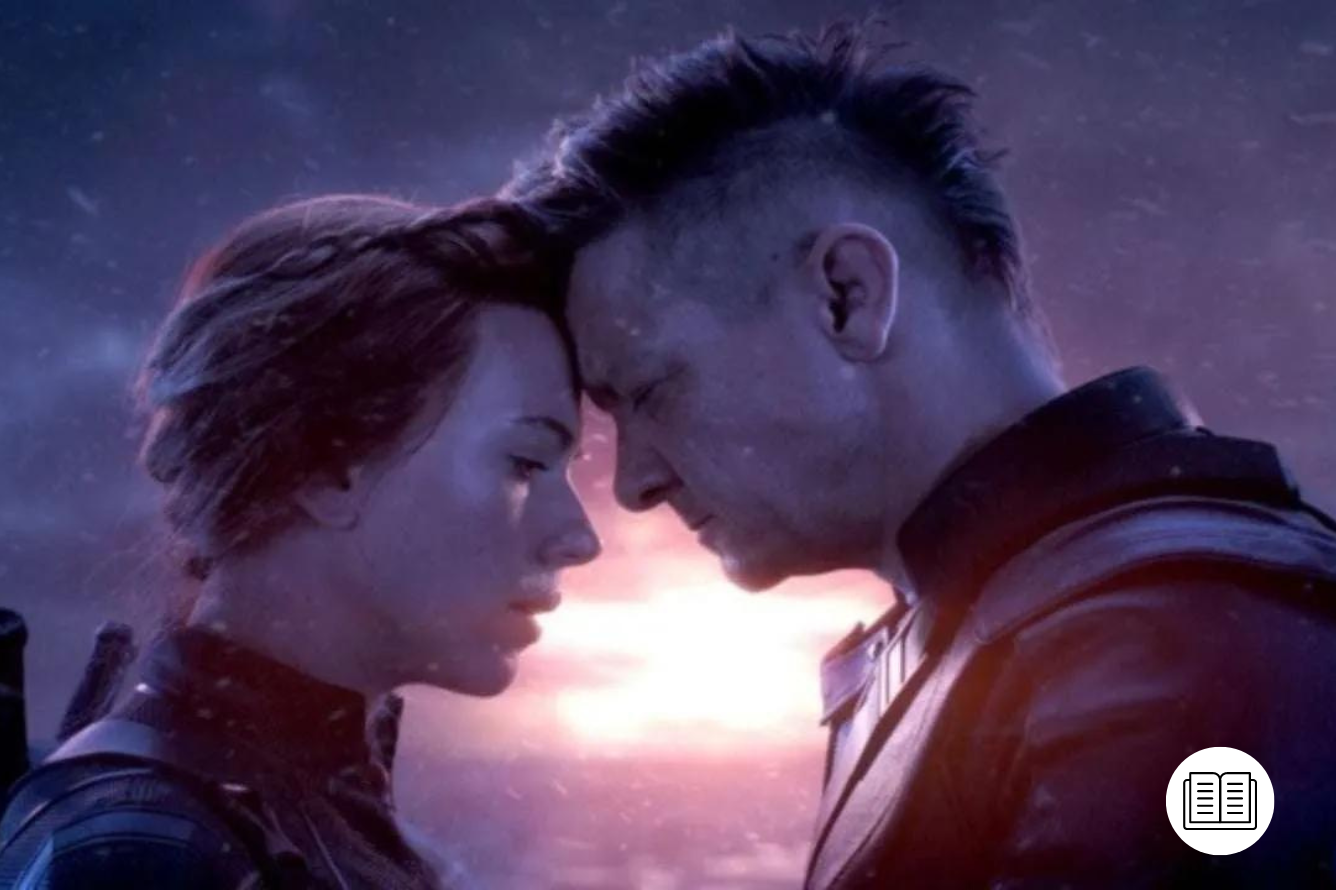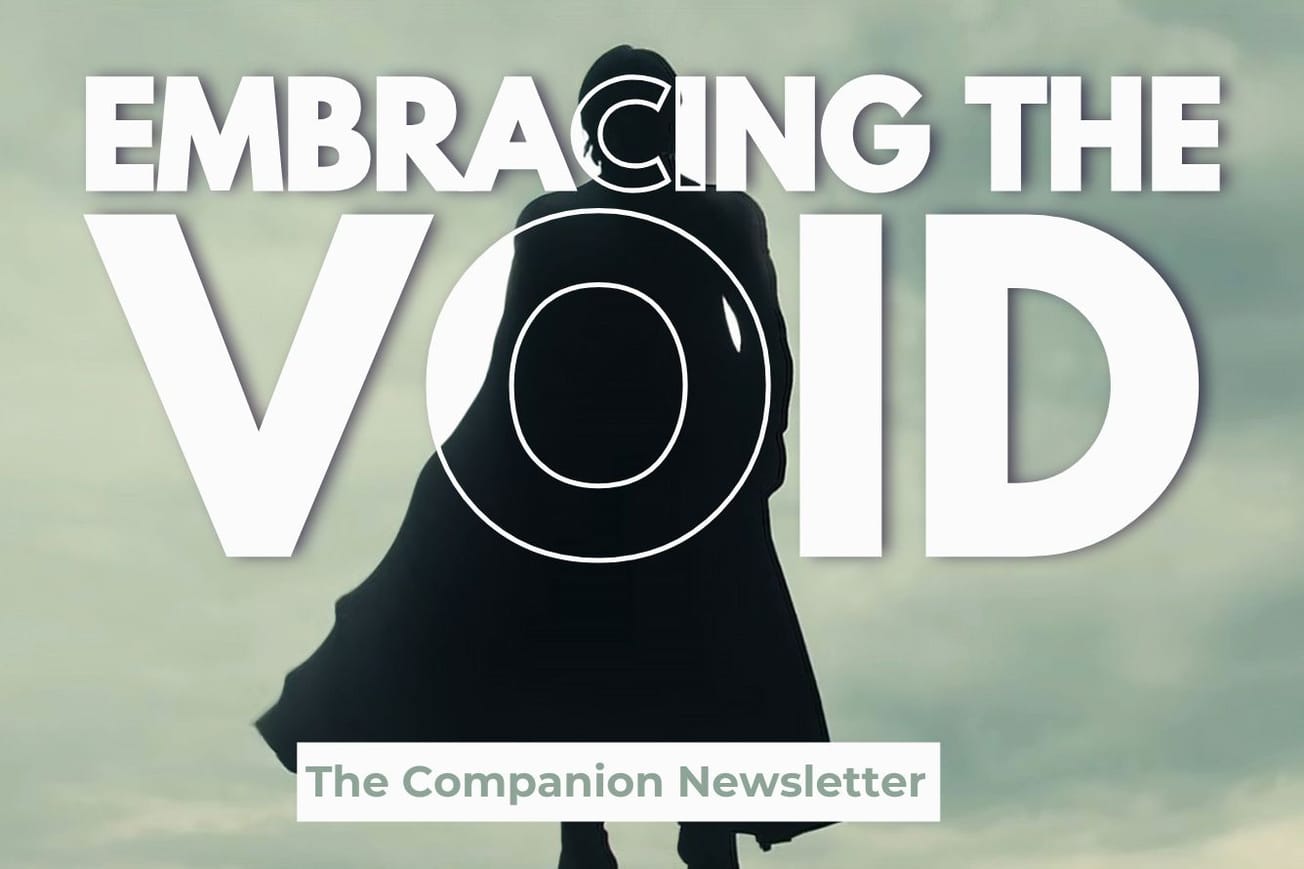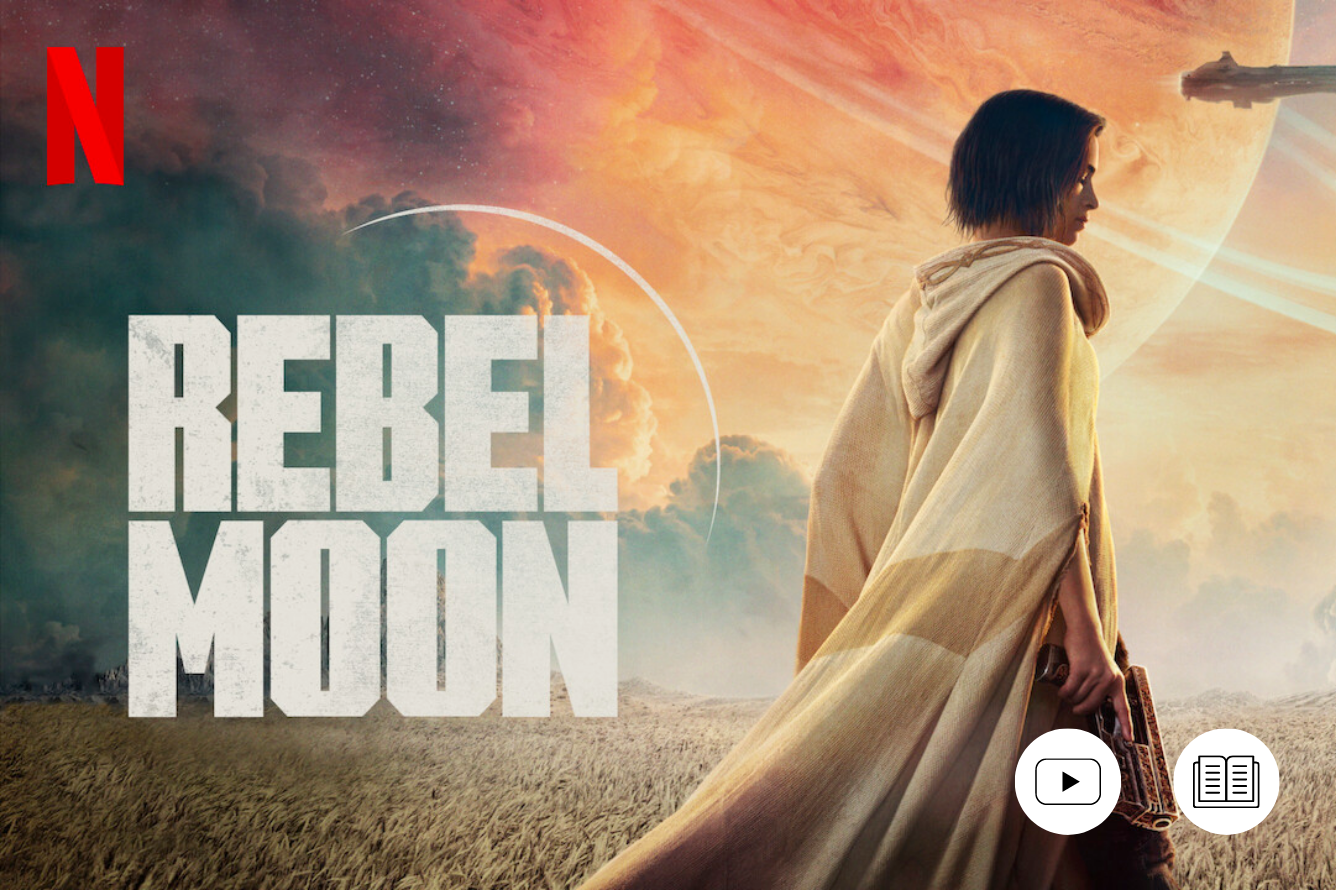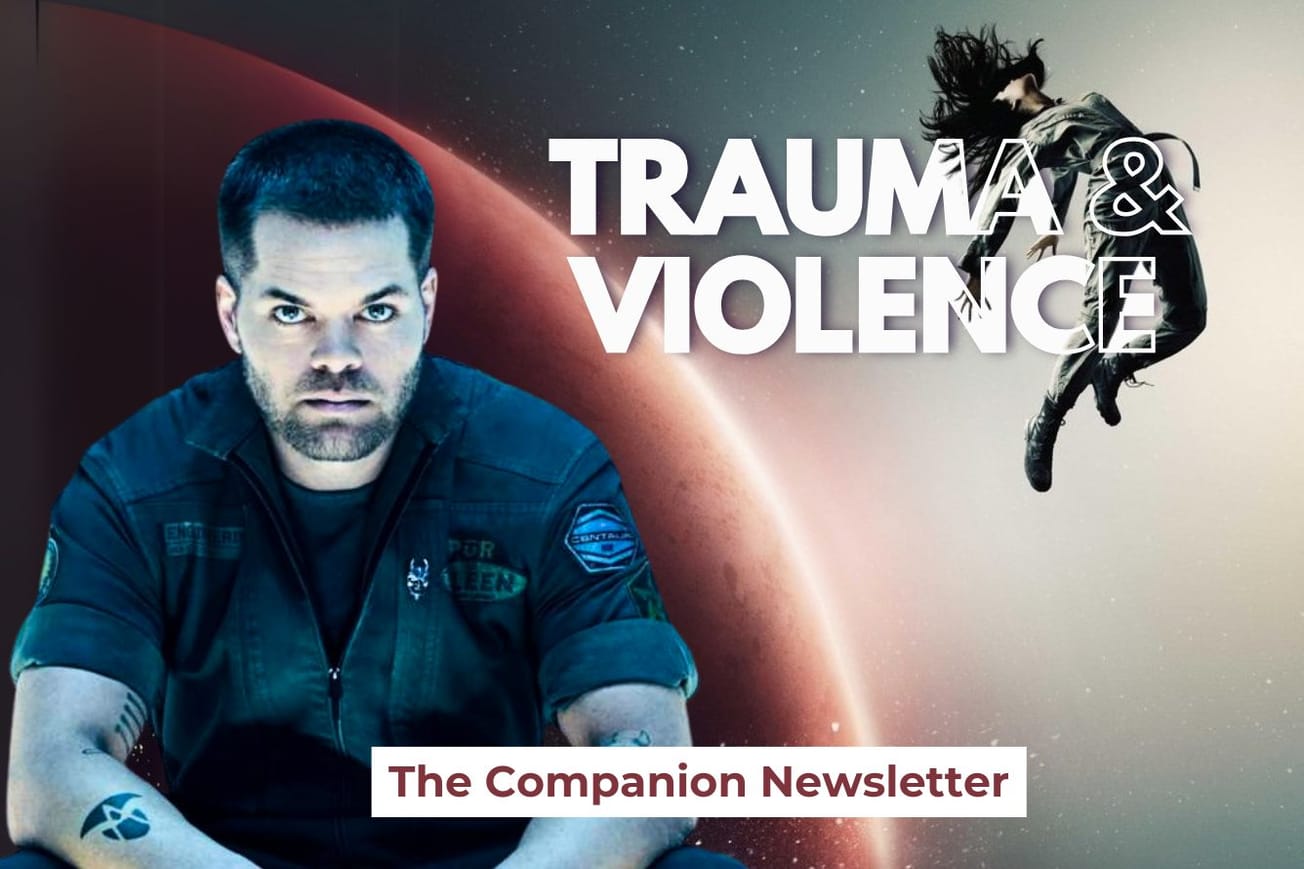Let us begin with an ending – to my mind, the finest in the Marvel Cinematic Universe. It’s in Antony and Joe Russo’s Endgame, the harrowing and salutary close to the Avengers film cycle. A man and a woman, superheroes, but of hardy human stock, identically clad in black, weapons on their backs, cross the dunes and reddish lakes of the planet Vormir. Here, in perpetual purple twilight, dwells the sentient Soul Stone, transformer of reality and eater of souls. Hawkeye (Jeremy Renner) and Black Widow (Scarlet Johansson) mount the precipitous crags to its high-flung shrine. But the Stone is not immediately apparent. The Red Guardian, a villain cursed by his selfishness to be the stone’s custodian, says, “What you seek lies before you.”
They must do what The Red Guardian cannot, and sacrifice what they love – a soul for a soul – in order to reverse the deaths of millions. Each chooses to sacrifice themself. Hawkeye, his pocked face pitted with sympathy for Johansson’s grief, argues that having demeaned himself as the vigilante Ronin, it should be him. Not that Clint Barton speaks in so many words; there’s no need. This is Natasha Romanoff, his bestie.
“I don’t judge people by their worst mistakes,” replies Johansson huskily – the Black Widow here referring to Clint’s knowledge of her own assassin past. “You didn’t.”
Hawkeye then tells Natasha that he loves her, in his Brooklyn fashion, “You’re a pain in my ass, you know that?”
Writers Christopher Markus and Stephen McFeely tunnel a whole lotta love beneath this exchange. In a heteronormative culture, their coded language, affectionate insults (“idiot”, “what, you’re going to get all decent on me, now?”), and shared history might indicate that these two are lovers. But their bond is profoundly more interesting. It’s platonic.
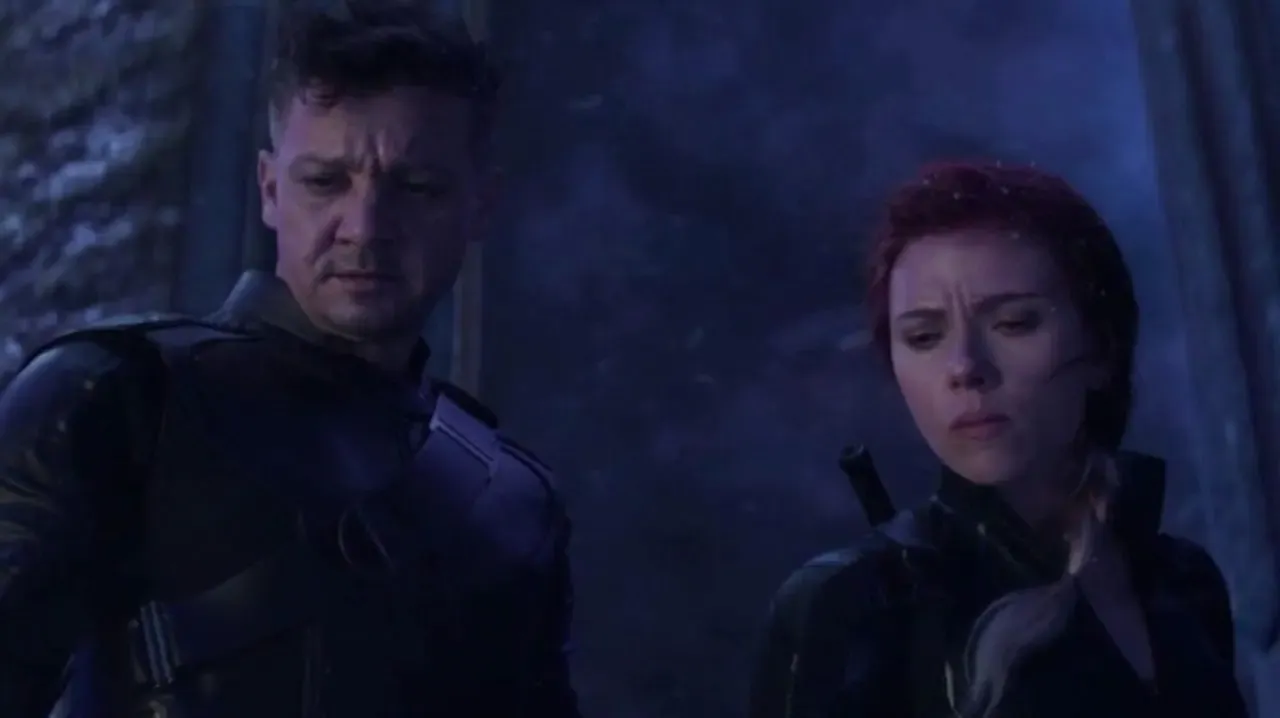
Marvel’s world resonates with powerful Western and Eastern myths. In The Symposium (385–370 BCE), Plato quotes Aristophanes’ creation myth of humans as two-headed, four-legged spherical creatures. Rolling about boisterously, they freaked out the gods. Sundered into two, the bisected creatures roamed the world, wailing pitifully for their other half. According to its original roots, platonic love can be, passingly, erotic. When the split halves finally reunited, Zeus took pity on them and allowed them to conjoin, in order to heal their longing. But sex proved inadequate and they cried out to Hephaestus, the divine smithy, to weld them into one.
Split circles signify the Platonic climax of this scene, a showcase of sci-fi epic cinematography. The landscape of Vormir is composed of ovals and circles. The sun of Vormir is a disc upon a disc: two bodies in an eternal eclipse. Two divided pillars form the Soul Stone’s cleft shrine. Natasha and Clint, looking down, see, far below, a circular pit, formed of two halves. Here, the pair’s adventures hinted at by them in The Avengers movies will become one person’s memory. Snow falls. The eclipsed sun blisters into a sunset. Orchestral strings descend in minor chords “Tell my family I love them,” says Hawkeye. This sounds heroic, but hang on – this guy is defathering his kids for another woman? What’s going on, here?
Clint Barton and Natasha Romanoff fulfill each other’s missing parts. Natasha’s mind control by a global oligarch had her committing international murder with hi-tech expertise, while the Hawkeye of the Aja and Fraction comics influencing the new Hawkeye series is a local, DIY bruiser. Clint keeps Natasha real, while Romanoff’s faith in him gives him wings. As Hawkeye’s trajectory became more villainous in the MCU and Romanoff’s nobler, the friendship matures. In non-fighting scenes, Remmer moves as warily as a recovering boozer, the pudgy-necked foil to Johansson’s cool sensuality that pricks his repressed emotions like a lance. Both friends favor deadpan humor in the height of battle in The Avengers (2012):
Natasha: “This is just like Budapest.”
Clint: “You and I remember Budapest very differently.”
In November 2021, at the Cinematheque Awards, Renner joked about his own position as a cinematic “late straggler” who had long admired Johansson since her performances as a child.
“Much like our on-screen characters, Clint and Natasha,” he went on, “I cannot understand how anyone could not love being in a literal and figurative foxhole with a truly stunning talent who I love and adore.”
Accepting her award from Renner, Johansson said, “I think I allow people to connect to themselves.” Speaking of the feelings we experience in cinema but deny in real life, she observed, “Isn’t that funny that we allow ourselves to be the most vulnerable in a dark room with complete strangers?”
Back on Vormir, the two besties resort to their most sincere language, that of their bodies in battle. One wins – and our last glimpse of this enigmatic character is their broken body lying within the halved circle. The other wakes up in a womblike lake, soaked, dripping, and Soul stone in hand, rebirthed into a solitude they did not choose.
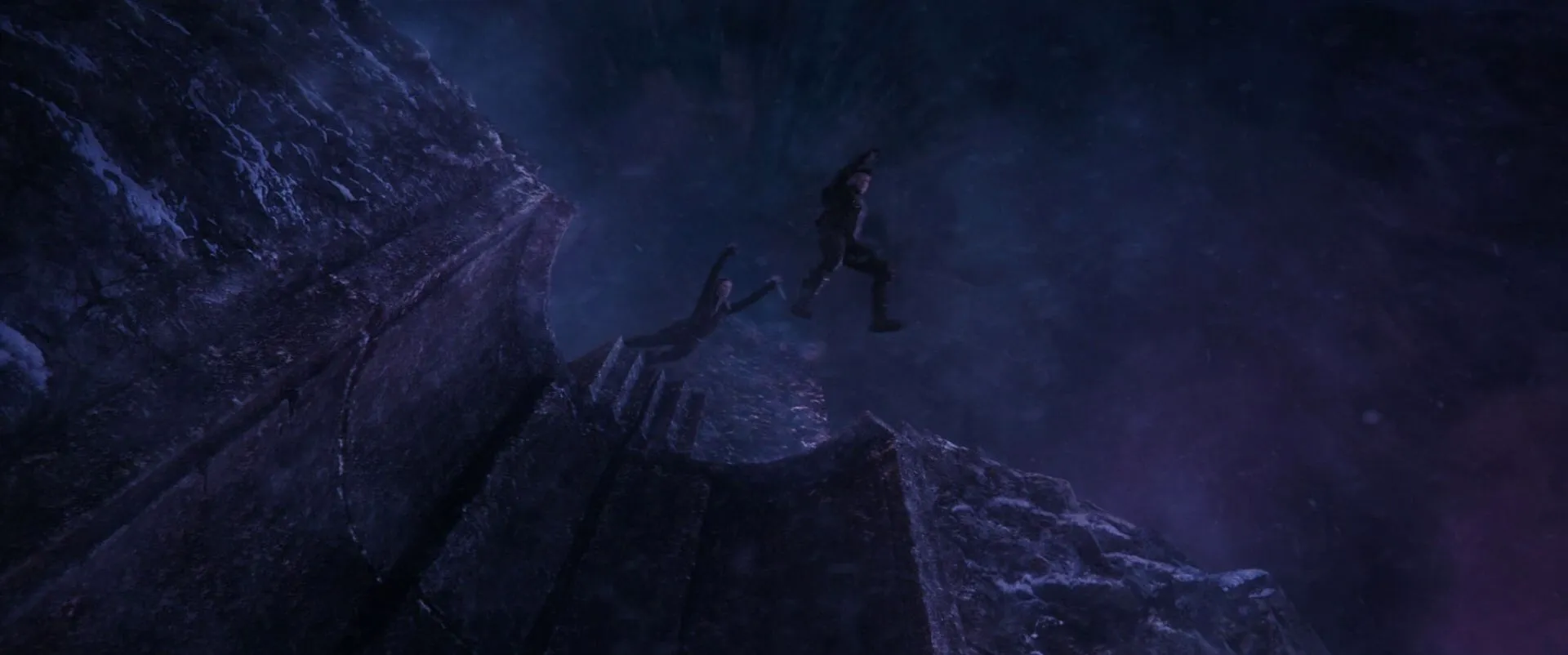
The power of this scene is derived, as Johansson’s words reflected, from our need for deep, complex emotional experiences not commonly allowed in the light of day. With its roots in children’s comics and a cast of intelligent, attractive actors, the Marvel Cinema Universe has been in a unique position to explore unconditional, passionate friendships between men and women. It’s a refreshing vision, in a #MeToo world where women at the highest levels of global power are unsafe (at the time of writing, the Chinese tennis champion Peng Shuai is still missing, after revealing her rape by a retired government official). Seeing superheroes lovingly reaching across gender and even species, without sexual expectation, offers an alternative to troubled viewers. But is returning to the male fold liberating for the women of Marvel? Or does it reinforce the heteronormative family model that harmed them in the first place?
Daddy Problems: Nebula and Tony Stark
The Ancient Greeks recognized variety in love. They had different words for it – philia (friendship), eros (desire), storge (affection), and agape (unconditional love). In Greek stories and poetry, humans morph into a beast or trees; people love their own gender and love their binary opposite. Friendship is as important, or more so than sex. One might say that the Ancient Greeks – and indeed the Ancient Vedics in India, whose rites oversee marriages and deaths in Eternals (2021) – were closer to nature, consciously enacting a political system of heterosexuality, with its governance of property, but thinking outside of it.
By the 20th Century, despite the fight for gay rights, mainstream Western cinema culture had dumbed down those ideas. That kind of freedom was for the gods – or superheroes, which is why, surprisingly for American Big Corp, the MCU offers a glimpse into alternative relationships: found families and adopted kids. Even Thanos, the genocidal god who obliterates half the universe’s living creatures, adopts two girls, Gamora (Zoe Saldana) and Nebula (Karen Gillan). He tortures one to promote the other, cybernetically ‘improving’ Nebula whenever Gomora wins their competitions: a twisted inversion of the Platonic myth.

Avengers: Endgame opens with Nebula (Karen Gillan) and Tony Stark (Robert Downey Jr.) stranded in deep space. Americana rock plays softly through the spaceship. It appears, initially, that two colleagues, good with their hands, are passing time, playing improvised table football with foil counters. But they are drifting towards their deaths; first Tony then possibly, despite her regenerative modifications, Nebula. Cruelly weaponized, Nebula has reason to dislike Stark, who, as Iron Man, functions through a love of weapons. Yet his camaraderie counteracts Thanos’ abusive barter of love. Playing with Tony, Nebula learns that sometimes, a game is just a game, and it’s okay to fail and try again. Karen Gillan’s flinch, on winning, is touching. She admits that she’s had fun in a whisper – and Tony seems to understand the tragedy of a girl who never found a safe place to play.


